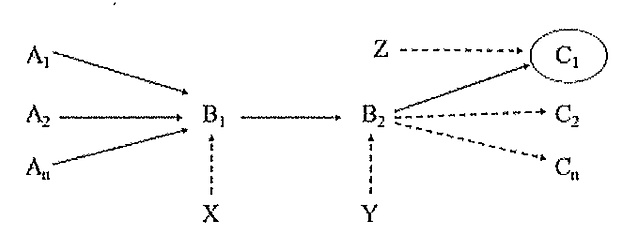Liability for nuisance caused by climate change

To what extent must operators of power plants assume liability for consequences of climate change? This question is at the centre of a lawsuit in which a Peruvian farmer is suing a German energy provider. The plaintiff´s house lies below a glacial lake, the volume of which has increased to a hazardous level in the course of climate change. The power plant operator is requested to partially cover the costs of preventive measures for securing the property of the claimant. The District Court Essen dismissed the case. The decision is appealed. The central legal question is about causality.
I. The lawsuit
Increasingly, climate change with its consequences is becoming the subject of judicial disputes. In the United States,[1] the Netherlands,[2] and Pakistan,[3] courts have ordered the state to consider or respectively to take stronger measures to protect against climate change and its effects.[4] In Germany the first lawsuit concerning the responsibility of a major energy utility company for nuisance caused by climate change to private property is under way. The District Court Essen dismissed the lawsuit in the first instance.[5] The claimant appealed this decision.
The facts are as follows: A Peruvian small-scale farmer and mountain guide, Luciano L., is suing a German energy utility company for property protection per § 1004 German Civil Code (BGB). His house is endangered by the rising water level of a glacial lake, Lake Palcacocha (lake P). The water volume of this lake has increased in recent years by 30 percent due to heightened glacial meltdown as a consequence of climate change. The risk of large chunks of ice breaking off from the Palcaraju glacier (glacier P) crashing into the lake has concomitantly increased. Should this occur, it could trigger a devastating flood wave, which would affect the area in which the claimant’s house is located. In order to reduce this danger, a fraction of the water in the glacial lake has to be siphoned off and/or the closure dam at the lake has to be reinforced. The claimant wants the energy utility company to cover a share of the costs relative to its contribution to climate change. Alternatively, the defendant shall carry part of the costs for building measures directly at the claimant’s property in order to protect it against the respective risks of a flood wave.
II. The decision of first instance
The claim is based on § 1004 of the German Civil Code (BGB) which may be invoked according to the rules of Private International Law (Conflict of Laws) that apply.
§ 1004 of the German Civil Law Code (BGB) reads as follows:
“If the ownership is interfered with by means other than removal or retention of possession, the owner may require the disturber to remove the interference. If further interferences are to be feared, the owner may seek a prohibitory injunction.”
The court of first instance, the regional court of Essen, rejected the complaint. The court dealt in depth with the question of causality, the core question for climate liability both in civil and in public law. Without legally relevant causation there is no liability. The court denied causality mainly for two reasons:
Firstly: The complexity of climate change and its consequences make it, as the court saw it, impossible to trace a clear causal link (as is presumed by the “but for test” or “conditio sine qua non test”) between the CO2 emissions of the defendant´s power plants and the endangerment of the plaintiff´s house in Peru.
Secondly: The court held further that in any case the contribution of the respondent to climate change did not meet the test of adequacy because of the countless other contributors to climate change.
III. The appeal
The plaintiff has appealed the decision. With respect to causation he underlines that contrary to the court`s reasoning a legally relevant causal relationship between the emissions of CO2 by the power plants operated by the defendant and the alleged impairment of the claimant´s property by the risk of being flooded can be clearly established. This causal chain can according to the plaintiff´s pleading be traced along the following steps:
- Step one: The CO2 emissions released by the power plants of the defendant end up (to a certain percentage[6]) in the atmosphere. Once there they lead, as dictated by the laws of physics,[7] to an increased concentration of greenhouse gases in the entirety of the Earth’s atmosphere (without respect to the place where they are emitted) without respect of the place of emission
- Step two: Due to the increased density of the layer of greenhouse gases in the atmosphere, heat dissipation from Earth is decreased. This causes an increase of global temperatures – also in the area of the Peruvian glacier P.
- Step three: The rise of global temperatures leads to accelerated meltdown of glacier P and heightens the probability of glacial break-offs.
- Step four: Due to the accelerated glacial meltdown, the water volume in lake P increases, which in turn increases the threat of the claimant’s property by a possible flood wave becoming more probable and more disastrous in case of a glacial break-off.
Link between green-house gas emissions and damage/nuisance caused by climate change[8]:

A1 – An = greenhouse gas emitters
B1 = densification of greenhouse gases in the atmosphere
X = other contributing factors to densification of greenhouse gases
B2 = global warming
Y = other (potential) contributing factors to global warming
C1 = glacial meltdown, increasing water volume in lake P
Z = other (potential) contributing factors to increasing water volume
C2 – Cn = other consequences of global warming ( e. g. sea level rise)
With respect to the causal impact of the defendant´s CO2 emissions the plaintiff asserts that the power plants of the respondent contribute about 0,5 per cent to the global CO2-emissions and to this extent have a share in the causation of climate change and rising temperatures. The respondent´s contribution to global warming thus equates to 30.000 cubic meters of the lake´s total built-up volume, which is in no way so insignificant that it carries no weight regarding the endangerment of the plaintiff´s house. Without this amount of water (“but for”) the endangerment of the plaintiff´s house would be considerably lower.
IV. Conclusion
The doubts of the District Court Essen regarding the adequate causality of the defendant’s greenhouse gas emissions for the impairment of the claimant’s property essentially revolve around two point of contention: the alleged complexity of the chain of causation and the multitude of co-causers for climate damages.
It is true that surveying climate change with all its effects and ramifications, and simultaneously identifying every possible feedback or reinforcement mechanism, is difficult. However, this does not hold equally true for all types of climate-related damages. A distinction can be made between two types of climate damages: ‘extreme weather events’ and ‘slow onset events’.[9]
With regard to extreme weather events, e.g. hurricanes, floods or catastrophic droughts that are associated with climate change, it is in fact (still) difficult to prove a relationship on a case-by-case basis between climate change and the respective event, particularly under the strict criteria for causality of the ‘conditio sine qua non’ rule. By legal standards, a mere statistical correlation is may not be regarded as sufficient proof of causality. Slow onset events, e.g. sea level rise, differ in that they take place over longer periods of time. Regarding these events, contemporary scientific findings have confirmed a causal relationship with climate change.
The accelerated glacial meltdown as a consequence of global temperature rise falls into the category of slow onset events. According to statements by the Intergovernmental Panel on Climate Change, the existence of a causal relationship between this phenomenon and rising greenhouse gas levels is confirmed.[10]
The multitude of co-causers of ‘slow onset’-type cumulative damages is not a convincing reason for a ‘blanket ban’ on legally attributing liability for causal contributions by individual emitters that are quantifiable and not insignificant. There is no legal basis for conflating the liability of major emitters for consequences of climate change, for which they are to a significant extent co-responsible, with a de facto “collective non-responsibility” of the countless minor emitters.
* Underlying this article is the essay “Störerhaftung für Klimaschäden” published by the German Law Review “Neue Zeitschrift für Verwaltungsrecht” (NVwZ 2017, 664 – 669). The author is affiliated with the law firm Frank & Kast, Mannheim, Germany.
[1] Massachusetts v. EPA, US Supreme Court, 549 US 497, (2007).
[2] Urgenda v. Staat, Rechtbank den Haag (2015), ECLI:NL:RBDHA
[3] Leghari v. Federation of Pakistan, Lahore High Court (2015), Case No.: W.P.No. 25501
[4] See also Frank, “Staatliche Klimaschutzpflichten” („State Responsibility for Climate Protection”), NVwZ-Extra 2022, 2016.
[5] The decision is published in English on the homepage of Germanwatch.
[6] A fraction of the released CO2 emissions is absorbed by so-called ‘carbon sinks’ (e.g. forests).
[7] According to the Boyle-Mariotte law, as the amount of a given gas increases within a closed space, the pressure and thus the density of gas molecules increases (uniformly) throughout the entire space. See Joachim Hertz Foundation, “Allgemeines Gasgesetz”, www.leifiphysik.de. Insofar the notion of an even “distribution” of emitted greenhouse gas molecules is inaccurate.
[8] This graph refers to consequences of climate change of the slow onset type.
[9] The Paris Agreement of Dec. 12, 2015, in Art. 8 I, also makes the distinction between ‘extreme weather events’ and ‘slow onset events’.
[10] See fn. 12 above.
| Autor:innen | Dr. Will Frank |
|---|---|
| Publikationstyp | Article
|

